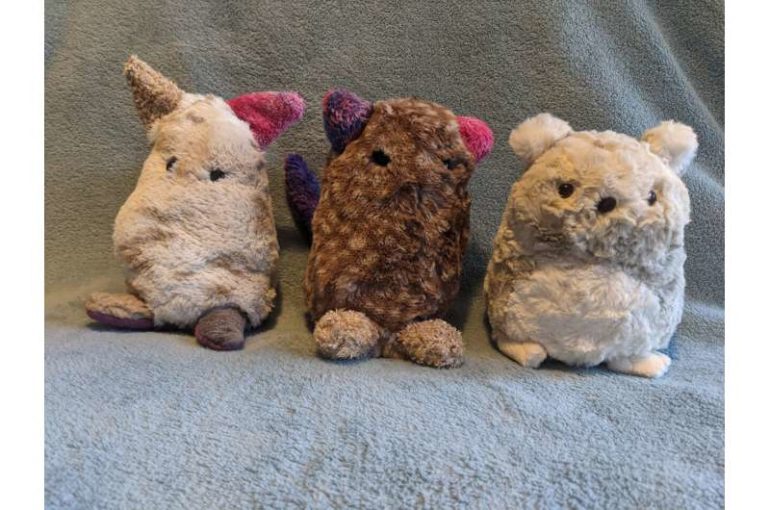In recent years, roboticists have developed a broad variety of social robots, robots designed to communicate with humans, assist them and support them in several different ways. This includes robotic toys and other robots designed to be used by children.
Researchers at University of California- Santa Cruz (UCSC), King’s College London, and a US-based company called Sproutel, and Committee for Children have recently developed a new socially assistive robot specifically designed to aid emotional regulation in children. This robot, presented in a paper pre-published on arXiv, resembles a small creature that a child might want to care for or cuddle.
“My research team at University of California Santa Cruz had been working on designing smart fidget devices and understanding use of fidget objects for a while and I met Petr Slovak (a key collaborator on the work in the paper) at a conference workshop,” Katherine Isbister, one of the researchers who carried out the study, told TechXplore. “His interests were focused on social emotional learning and how to scaffold those skills.”
Slovak, a lecturer and researcher at King’s College London, thought that smart fidget devices could aid emotional learning and emotional regulation in children. He thus started collaborating with Isbister, as well as other students and researchers at UCSC, to develop a robot or device that could be used by children to regulate their emotions.
The robot developed by Isbister, Slovak and their colleagues looks a bit like a plush toy or stuffed animal. This ‘robotic stuffed toy’ responds to a child’s touch, calming down and reducing its movements as a child gently caresses it or hugs it.
“The child can tell or assume how the creature ‘feels’ through haptics,” Isbister said. “When the creature is nervous, it has a rapid heartbeat, but as it calms down it also slows down, then turns to a purr. This interaction helps the child to self-soothe, because they are using fidgeting actions that can contribute to calm and they are getting ‘outside of themselves’ by focusing on someone/something else.”
While there are several fidgeting objects or toys on the market designed to help children to calm down, these objects are typically static and do not respond to a child’s touch or enable interactions such as the one produced when a child interacts with the social robot created by these researchers. This makes the new robot unique and sets it apart from previously created fidgeting devices for children.
The researchers evaluated their robot in a series of initial experiments, where children and their parents were asked to interact with the robot and share their feedback. The feedback they collected was highly promising, as all the 25 children who engaged with the prototype said that they enjoyed it, wanted to keep it for longer, and found it easy to include into their everyday routines.
“I was really struck by the positive impact that was reported by children and parents in our field study,” Isbister said. “It’s always really gratifying when a hypothesis that you have (that something could help) is confirmed or proved. We will now need to see how more extensive trials go, but the early promise of being able to support and scaffold children’s self-regulation of their emotions is exciting.”
In the future, the robotic toy created by this team of researchers could be commercialized and implemented on a large-scale, as a tool to help children to self-soothe and to regulate their emotions. Meanwhile, Isbister, Slovak and their colleagues plan to continue their research exploring the potential of smart fidgeting devices.
“We are currently conducting an NIH-funded trial for a smart fidget ball that we developed to help those with ADHD to focus (a collaboration with Julie Schweitzer at University of California Davis),” Isbister said. “Meanwhile, Petr Slovak and his research team are continuing to explore the use of the creature we created (now developed into a commercial product by Sproutel and Committee for Children) in various emotion-regulation contexts with a range of populations including children, adolescents, and youth.”
Popping toys, the latest fidget craze, might reduce stress for adults and children alike
More information:
Design not lost in translation: a case study of an intimate-space socially assistive robot for emotion regulation. arXiv:2104.11340 [cs.HC]. arxiv.org/abs/2104.11340
2021 Science X Network
Citation:
A social robot that could help children to regulate their emotions (2021, June 9)
retrieved 13 June 2021
from https://techxplore.com/news/2021-06-social-robot-children-emotions.html
This document is subject to copyright. Apart from any fair dealing for the purpose of private study or research, no
part may be reproduced without the written permission. The content is provided for information purposes only.



